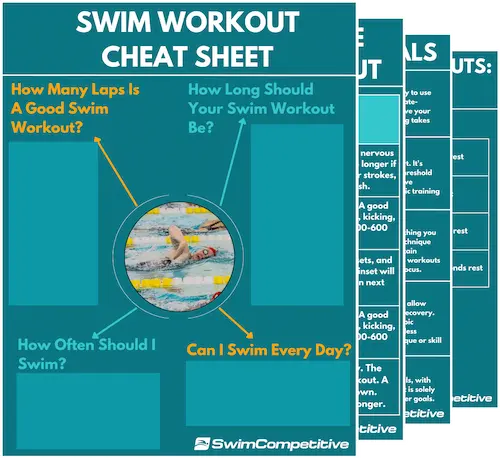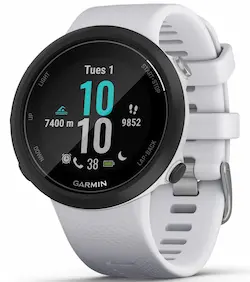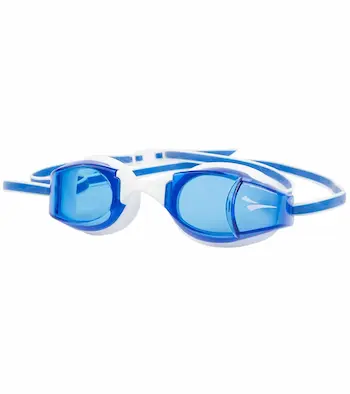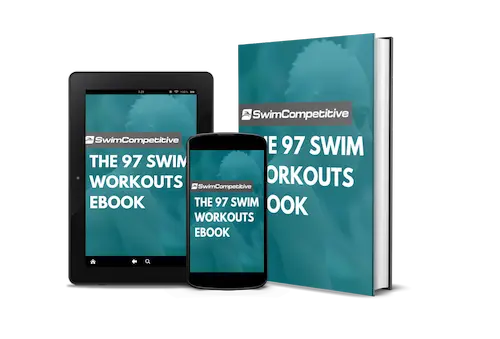Swimming is easily one of the hardest and most energy-consuming sports on the planet. Professional competitive swimmers train up to 30 hours per week and can consume anywhere between 6000 to 10000 calories per day.
Meeting these energy needs plays an important role in optimal recovery, performance, and progress in the water and that’s why in today’s article we’ll be taking a look at how to create an optimal meal plan for swimmers.
Many swimmers don’t fully understand how much energy their bodies are burning during swim practice. This can become a problem since many swimmers aren’t consuming enough calories to fuel their training and keep their bodies healthy. However, a meal plan for swimmers can help to counter this problem while making your life much easier.
Just for some perspective, Michael Phelps was consuming up to 12 000 calories per day leading up to the 2008 Olympic Games in Beijing. His diet wasn’t the healthiest but it did fuel him.
In this article, I’d, however, like to discuss how you can meet your energy demands while consuming healthy foods which will be far better for your progress and performance in the long run.
Here are a couple of benefits of a healthy meal plan for swimmers-
- Fuel your body to train and perform at peak levels.
- Maximized gains from training.
- Improved recovery between workouts and races.
- Achievement and maintenance of an ideal body weight and physique.
- Reduced risk of injury, overtraining fatigue, and illness.
- Sustained concentration and mental skills over the day.
- Achievement of consistent high-level competition performances.
How to Create a Meal Plan for Swimmers: 5 Easy Steps
Step 1- Determine Your Energy Needs
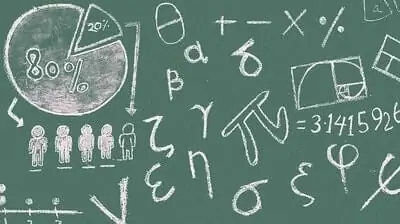
The first step in setting up a meal plan for swimmers is to calculate how much energy your body requires on a daily basis. In other words, the number of calories you require to maintain weight, lose weight or gain weight.
As you can see, there a 3 scenarios listed above, let’s take a deeper look at each to help you decide on your nutrition goals:
Maintain weight: In order to maintain weight you’ll have to be consuming roughly the same amount of energy that you are expending every day. Say your body burns 3000 calories per day on average, then you’ll also need to eat 3000 calories per day in order to maintain your current weight.
Weight maintenance is a good option for swimmers who are already strong, healthy, and at the ideal body fat percentage and is the desirable state for much of our lives. By ensuring that you are meeting your daily energy expenditure your body will be able to function optimally in training and will also be able to recover at an optimal rate. This is known as energy maintenance.
Energy maintenance: Energy intake = energy expenditure
Lose weight: Being overweight can definitely have a negative effect on swimming performance. According to the American Dietetic Association, male athletes should have between 5-12% body fat and female athletes between 10-20% body fat. These ranges usually allow for a small layer of fat on the body and aren’t anything superhuman.
I don’t recommend going on a diet or weight loss program if you aren’t at least over these ranges as that will require you to consume less energy than your body expends which can harm performance and recovery.
If you are outside of these ranges I recommend going on a long weight loss program of 12 weeks or more. This will help to minimize the negative effect on training performance by allowing for more time to lose weight, meaning you’ll lose weight at a slower rate, instead of losing the same amount at a faster rate. This is also known as an energy deficit.
If you need to lose weight, check out these swim workouts for weight loss.
Energy deficit= Energy intake < energy expenditure
Gain weight: Weight gain is a necessary part of becoming a stronger athlete. During hard-training periods and the off-season this nutrition style may be preferred to ensure maximal progress and gain from your training.
In order to achieve weight gain, you’ll have to consume more energy (calories) than your body expends. I only recommend this for athletes who are already within the athletic bodyfat range mentioned above. Going slightly over these ranges in periods of hard training isn’t a problem as you should be able to cut off additional bodyfat easily before the competition season starts again. This state is known as an energy surplus.
Energy surplus= Energy intake > energy expenditure
Now to determine your energy needs you’ll first need to know what you’re daily energy requirements are. To calculate this you want to first determine your basal metabolic rate which is the rate at which your body uses energy when you are not doing anything, like sleeping for example. The energy used during your basal metabolic rate comes from things like breathing and maintaining a warm body temperature.
Once you have calculated that, you want to determine the amount of energy required for all of your other activities and then add it to your basal metabolic rate. External activities include things like training, walking around, doing a core workout (see my article on the best core exercises for swimmers), etc.
Energy requirements= BMR + energy expenditure from physical activities
There isn’t an exact science to determining these numbers and chances are nobody can get it exactly right as it varies from person to person. There are, however, many tools that can help us do this. An activity tracker will probably be the most accurate as it can provide personal insights, but online calculators are a free alternative, they just won’t be as accurate.
Use these tools to determine your energy needs-
A swimming watch is a good way to track your energy expenditure throughout the entire day:
Personally, I prefer the FINIS Smart Goggles for swim tracking, but the Garmin is a better option for the entire day. That said, you can use both and connect them to an health app.
The FINIS Smart Goggle is the most innovative smart swimming goggle available.
Directly display and track your laps, splits, set time, rest time, stroke rate, and more in your goggles with the non-intrusive heads-up display while swimming.
Free tools:
Step 2- Choose Your List of Foods
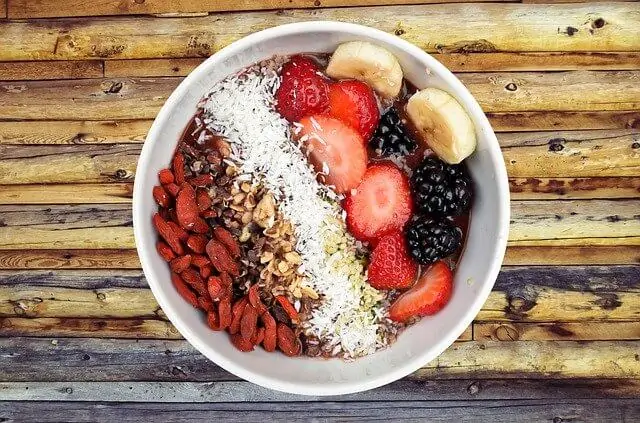
The next step in creating your meal plan is deciding on what foods you want to incorporate into your diet. Before you can do this, you, however, need to have a bit of a better understanding of the different types of nutrients required for performance. Allow me to briefly explain each-
Carbohydrates: This is the basic source of energy for your body. Your body prefers to use carbohydrates as energy over any other nutrient. Incorporating enough healthy carbohydrates should be an important part of your meal plan as it is going to form the base of fuel for your training.
Examples of healthy carbohydrates for swimmers-
- Wholegrain cereals, oats, bread, and crackers.
- Grain-based foods such as rice, pasta, quinoa, noodles, potatoes.
- Fruit, legumes, starchy vegetables, and beans.
- Sweetened dairy products like yogurt.
Proteins: Required for the structure and function of the body’s tissues. In a more simple way, this basically means proteins are important for recovery and growth. As a swimmer, you want to be consuming a good amount of protein; this will optimize your body’s ability to recover, build muscle, and become stronger.
The ideal amount of protein intake for both strength and endurance training has been set at roughly 1.3-1.8 grams per kg of body mass per day. Those who follow a balanced diet probably already consume protein in these ranges, but for some, additional protein supplementation may be required.
Examples of healthy protein-rich foods for swimmers-
- Eggs
- Milk or soy milk
- Lean meats like chicken breast, steak, ground beef
- Fish
- Tofu or soy meat
- Legumes or lentils
- Protein supplements
Fats: This nutrient plays an important role in many of your body’s essential functions, and they shouldn’t be avoided. Make sure you consume a good amount of fats, keep them healthy, though, meaning monounsaturated- and polyunsaturated fats. You should avoid trans- and saturated fats at all costs; these fats can have a negative impact on your training and performance in the water.
Examples of healthy fat sources for swimmers-
- Nuts
- Avocados
- Cheese
- Vegetable oil
- Fatty fish
- Chia seeds.
Micro-nutrients: These are essential vitamins and minerals, they are important for keeping your body healthy and protecting it from illnesses and infections that can compromise your training. Make sure to consume a variety of fruits and vegetables every day; this should be enough to cover your micro-nutrients and keep your body healthy.
Examples of good micro-nutrient sources for swimmers-
- Bananas
- Oranges
- Spinach
- Beetroot
- Apples
- Kiwi
- Broccoli
- Carrots
Now that you have a good understanding of the different macro and micronutrients, you can choose your list of foods to incorporate into your meal plan. Remember to keep things balanced and to incorporate all of the macro and micronutrients in your diet. This will vary from person to person, so find what works for you.
Here are some nutrition articles that can help-
- What should swimmers eat before practice?
- Best supplements for swimmers for elite results.
- What should swimmers eat before swimming in the morning?
Do You Want to Make Every Lap Count?
Stop wasting your time in the pool feeling lost and doing directionless swim workouts, and start training effectively! Our ebook contains 97 structured and goal-orientated swim workouts to help you become a better, faster, and fitter swimmer. Whether you’re a complete beginner or a seasoned pro, there are a multitude of workouts for every type of swimmer.
Step 3- Create a List of Meals and Food Amounts
Now that you’ve put together a list of all of the foods you are going to incorporate into your meal plan, it’s time to actually put them together into meals that you can make. Part of this includes deciding what amount of each food you will use and calculating the calories as well as the macro- and micro nutrients for each meal.
This will make your life much easier as you will always have a set sheet of healthy meals to pick from that you can quickly put together or prepare in advance to ensure you stay on track with your meal plan.
You might be wondering, well how am I supposed to know the calorie and nutrient amounts for my meals?
Luckily, it isn’t that hard, all you need to do is a quick google search for the nutrition facts of the food you want to use and then write down those numbers, once you have done that for each food in your meal you can put it together to see what you get or adjust it to either add or remove protein, carbohydrates, or whatever you need.
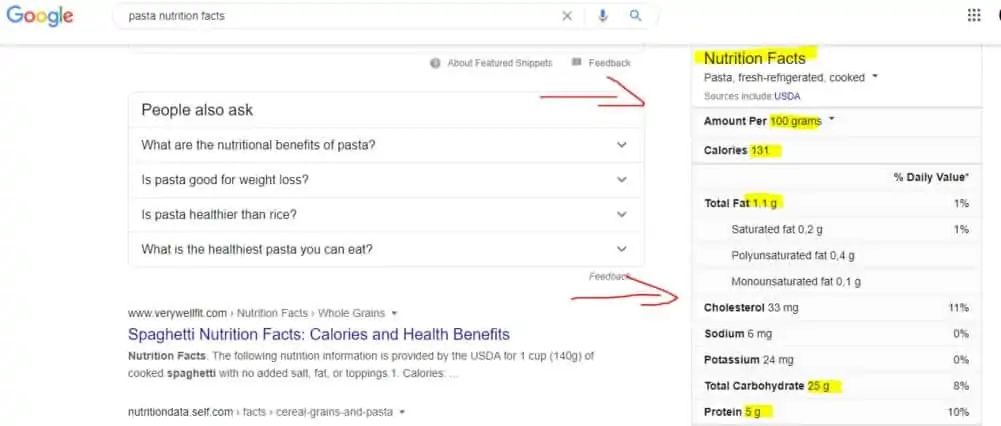
Allow me to do a quick example with you so that you can get a better understanding of what to do. Let’s say we were creating a very basic pasta and tuna meal.
- Decide on the amounts and foods, say 100 grams of tuna, 250 grams of pasta, and 50 grams of green pepper all mixed together with a tablespoon of mayonnaise.
- Do a google search to calculate the nutritional values for each.
- Then add together the calories, proteins, carbohydrates, and fats to get an overview of the nutritional value of your meal.
- That would equate to 527,5 Calories, 35,35 grams of protein, 64.9 grams of carbohydrates, and 12,85 grams of fat. (Don’t bother calculating the micro-nutrients just eat your fruits and vegetables and you’ll be fine).
There are also many apps and tools that allow you to track your calories and nutrients, these are more accurate as they allow you to scan the bar codes on foods to provide the most accurate results. I, however, wouldn’t get too obsessed with this as it does take time and the rough estimates are more than adequate for most of us and won’t cause any frustration.
Some good meal ideas for swimmers-
- Whole grain breakfast cereal with low fat milk.
- Baked beans on toast or on a baked potato.
- Tuna and rice with vegetable side.
- Fruit salad with fruit-flavored yogurt.
- Bagel with peanut butter + low fat milk.
- Fruit smoothie or liquid meal supplement.
- Cooked chicken breast with vegetables and rice.
- Low fat chocolate milk.
- Lean meat and vegetable pizza.
- Sandwich with meat and salad filling.
- Meat and vegetable stir fry with noodles or rice.
- Tuna salad.
Step 4- Scheduling Your Meals, Frequency and Times
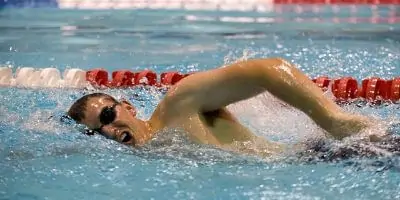
Scheduling your meal times are far more important than you may think and it’s something many swimmers neglect.
There is nothing worse than having to dish out a set of fast sprints on a full stomach.
Ideally, you want to allow enough time for your meals to digest before training and you also don’t want them to close to each other as it might kill your appetite. I recommend eating your last meal about 1 to 2 hours before working out.
This will allow enough time for the carbohydrates and other nutrients to break down and enter your bloodstream so that they can be used during your workouts. It will also help to avoid having to train on a full stomach and feeling like you are sinking or want to throw up.
As for your other meals I recommend spacing them out evenly. This is going to depend on the number of times you eat per day. Some people like to have 3 big meals in a day others like 6 smaller meals, there isn’t really a right or a wrong way, it’s up to personal preference.
Step 5- Testing Your Meal Plan
Now that you’ve set up your meal plan you’ll have to test it. This can be done in a couple of different ways, but ideally you should combine all of the methods I’m going to list now to achieve the best results and find what works for you.
Firstly, I recommend tracking your weight, body fat percentage, and muscle mass. This will give you an indication of how your body is reacting to your meal plan. Ideally, you should allow at least 3 months for each testing period to see some real results and changes.
An easy way to track these statistics is by using a scale that can track these numbers. Once again, it won’t be exact, but it’ll be the easiest way.
Track your body weight, fat percentage, and general body composition. Connect the scale to your phone and receive all of your data in the easy-to-use app. The scale can be recharged and lasts up to 3 months on a single charge.
Next you’ll want to be tracking your performance in training as well as how you feel throughout the day. Remember to also take other factors such as sleep, how busy you are etc. into consideration.
This can be done by writing down your workouts and performance in a logbook which is something all swimmers should have anyway. If you don’t have one you can use any old notebook and just write down all of the things I just mentioned as well as other information that you think can be useful to become a better swimmer.
Bonus- Water Intake
Consuming enough water is very important, and even more so for athletes. Water is used in all the cells, organs, and other tissues in your body to help regulate temperature and maintain other important functions.
Water is lost through many activities including breathing, sweating, and digestion, all of which athletes experience a lot of. Therefore it is important to make sure to consume enough water throughout the day and to rehydrate frequently throughout.
Generally, it’s recommended that athletes should consume about 50ml (1,7 fl. oz) per kilogram of body weight throughout the day. If the temperatures are high for a particular day, you should consider drinking one or two liters extra as your body will lose fluid through sweat.
Creating a Meal Plan for Swimmers Is Easy!
So there you have it, a step by step guide on how to create your own meal plan for swimmers. Food is a really important part of any athletes’ training, it fuels you for optimal performance, keeps you healthy, and helps your body to recover in time for your next workout.
I highly recommend that you follow these steps and create your own meal plan as a swimmer. This will help you to become a better and faster swimmer over time.
Just remember, most of your opponents don’t have their own specific meal plans that they follow, you are gaining a direct competitive advantage by creating your own meal plan. The most important part, however, is to stick to it and stay consistent with healthy eating habits.
